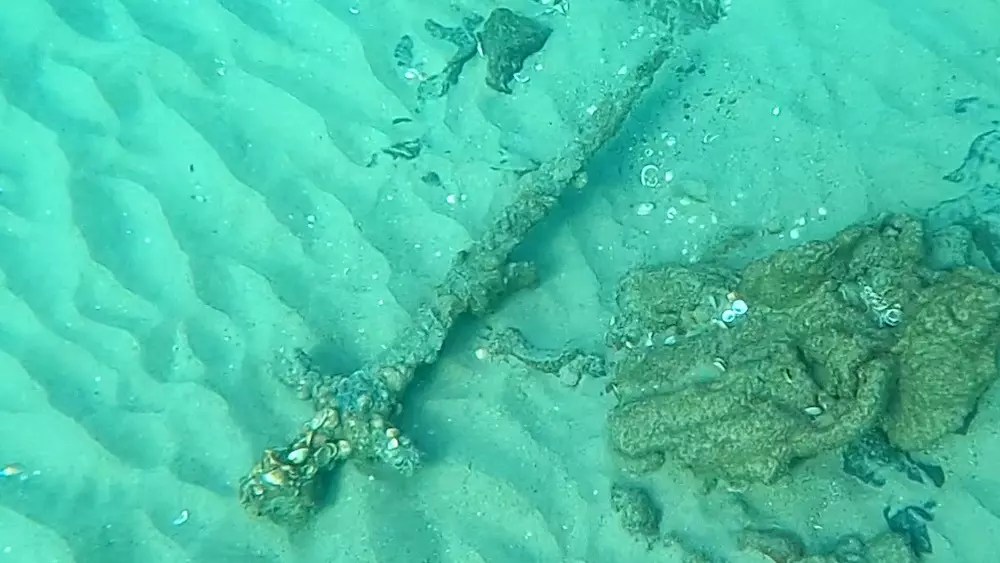Crusader sword found in Holy Land was bent, possibly in naval battle, X-rays reveal
A sword studded in seashells and caked in sand, found at the bottom of the Mediterranean Sea near Israel, was likely dropped there by a Crusader during battle between 800 and 900 years ago, a new analysis reveals.

Divers discovered the medieval weapon, whose blade measures nearly 3 feet (88 centimeters) long and 1.8 inches (4.6 cm) wide, in 2021 during an underwater expedition. Because the sword was heavily coated in concretions, archaeologists were initially limited in what they could learn about the artifact.
However, those very same caked-on deposits also preserved the weapon. With the help of X-rays, researchers were able to “visually penetrate the layers of marine concretion and glimpse the original outline of the sword,” according to a July 23 Facebook post by the Israel Antiquities Authority (IAA).
The X-ray revealed that the blade was bent. Swords damaged during battle can be bent back into shape at a later date, so the fact that this 12th- to 13th-century weapon — dubbed the Newe-Yam sword — remained bent and was not in a sheath known as a scabbard led archaeologists to conclude that it was likely damaged during the Crusades, according to a new study published in the July issue of the journal ‘Atiqot.
The Crusades were a series of religious wars between Christians and Muslims that unfolded between A.D. 1095 and 1291.
“The sword was used by a Crusader warrior who settled in the country after the First Crusade and established the Kingdom of Jerusalem in 1099,” co-author Jacob Sharvit, director of the marine archaeology unit of the IAA, wrote in the Facebook post.
“Considering the bloody battles that took place in the country between the Crusaders and the Muslims, known from several historical sources, we could expect to find more such swords. In practice, we mostly find fragments, very few whole swords.”
He added, “So far, seven swords from this period have been found in the country, most of them discovered in the sea. Swords were not usually discarded, but over the years, once they were no longer in use, the metal was recycled for other uses.”
Swords were considered valuable weaponry at that time, and they would’ve been among a Crusader’s prized possessions. So losing one to the sea during a naval battle would have been detrimental, or even fatal.
“The sword was part of a knight’s or warrior’s personal equipment,” lead author Joppe Gosker, an archaeologist with the IAA, wrote in the Facebook post. “It was the main weapon in face-to-face combat in those days.
Swords required a lot of quality iron and were therefore expensive. In addition, sword fighting required training and practice, and therefore, only the nobility and professional soldiers fought with swords.”
While scans of the seafloor near the sword’s resting place didn’t reveal any human remains, researchers wouldn’t be surprised if the soldier were also buried there.
“The warrior may still lie undiscovered in the depths, to be revealed one day by the shifting sands,” the researchers wrote in the Facebook post





